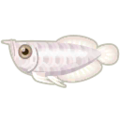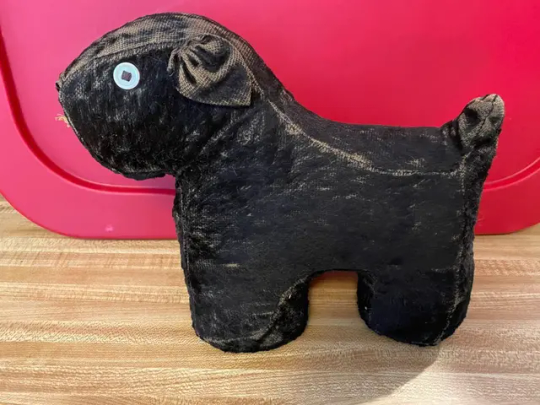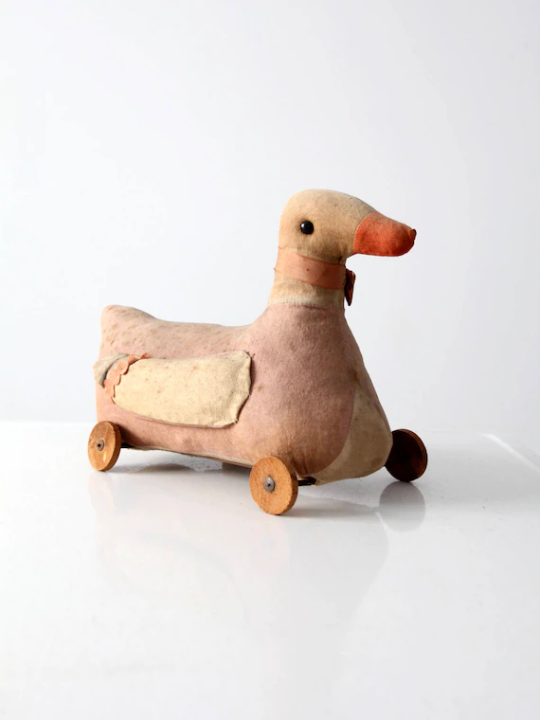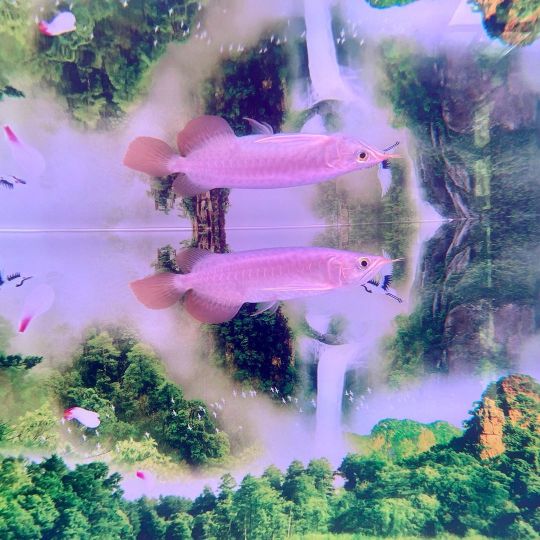#Osteoglossidae
Text
Animal Crossing Fish - Explained #209
Brought to you by a marine biologist with different fish, same name...
CLICK HERE FOR THE AC FISH EXPLAINED MASTERPOST!
So, today we will cover the Silver Arowana, and I know what you’re thinking - gee, that sounds familiar. Didn’t we already cover the Arowana way back in like 2020 or whatever? And, yes, we did, but it was a different species, and I’m here to be wildly accurate and complete in my coverage of all the fish and aquatic friends in this franchise, so here we go!

The Silver Arowana first appeared in AC Pocket Camp in June 2021 for Fishing Tourney 39 that featured fish named after precious stones or metals - so that tourney also included the Black Ruby Barb we covered just a few entries ago. The Silver Arowana is a mostly tropical species, native to South American rivers. So, it’s pretty cool ACPC released it in the summer. Makes sense.
Anyway, so we all know that there is a species of Arowana in AC New Horizons - I covered it already and found that one was the Super Red color morph of the Asian Arowana. Both the Asian and Silver Arowanas belong to the same Family of fish - the Osteoglossidae, or the bony tongues. The name is derived from a sharp, toothed bone at the bottom of the mouth that can grind against teeth at the roof of the mouth. The family is tiny, comprised of just the arowanas and arapaimas, for which there are only about 14 species. The arowanas are divided into two Genus - the Scleropages, which is where the Asian Arowana comes from, and Osteoglossum, which today’s Silver Arowana (Osteoglossum bicirrhosum) resides.

By User:Qwertzy2 - Taken by User:Qwertzy2, CC BY-SA 3.0, https://commons.wikimedia.org/w/index.php?curid=226294
There are two species in Genus Osteoglossum. They are both more ribbon-like, rather than bulky like other arowanas. If you look at the fish side-by-side, you’ll see they have like, the same face but totally different tail ends.
The Silver Arowana also has the funny nickname of “water monkey” because of its habit of jumping out of the water to catch flying prey. Yes - flying prey, like bats, birds, and flying insects, have been found in the stomachs of large specimens. That’s pretty rare though - the silver arowana usually hunts for smaller fish, crustaceans and other aquatic prey that float on or near the surface. You can really tell that this fish hangs out at the surface - its back is very straight and flat and that mouth is pointed almost entirely vertically to suck in prey from below. They also have two short barbels on their lower jaw to feel the vibrations of things landing on the surface. So, yeah, I think this is one of the very few predators we’ve covered that is most adapted to surface hunting like this!
And there you have it! Fascinating stuff, no?
#silver arowana#arowana#fish#freshwater#animal crossing#animal crossing pocket camp#acpc#science in video games#animal crossing fish explained
72 notes
·
View notes
Note
7 11!
7. what animal do you look forward to seeing when you visit an aquarium?
Fish, mostly. I am partial to the family Carangidae, which includes the lookdown, permit, and pompano, and the family Osteoglossidae, which includes the arowana and arapaima. A tropical coral reef or a well-staged jellyfish exhibit may also hold my attention for some time. Perhaps on some weekend we might visit an aquarium. I wonder if Master Soleil has ever been.
11. anything from your childhood you’ve held on to?
I have a hat box on a shelf in the closet. This contains an album of photographs, along with the four artifacts from my nursery I cannot bear to throw out. They are two children’s books and two toy animals.
These books compose Our Esteemed Lady Elisia Jessamine’s Illustrated Collection of Mnemonics for Precocious Young Herbalists (Third Edition). In the form of charming little rhymes, one book contains advice for gardening, the other foraging. For as long as I can remember, I have known them by heart. They were my introduction to the world of plants, and I used to sing them for comfort and amusement. An excerpt:
Spaderoot takes to rocky soil.
A leaf may soothe a weeping boil.
Where spaderoot found, thou must beware.
Red blooms of poison find ye there:
A single sprig of Hydra’s-breath
Will bring about a bullock’s death.
And these were my adventuring companions, the cunning Seukotinim and their fearless steed, Badorushi the horse-sized duck. It seems silly to hold on to such things now. But the duo were so important to me as a small boy that from my notion of them I cannot sever the impression of great relevance.
[Seukoti and Badoru resemble these apparent ebay listings.]


3 notes
·
View notes
Photo

Silver Arowana - this predator is a member of the Osteoglossidae family and is native to the Amazon River basin, Rupununi and Oyapock Rivers in South America. It is also called a 'water monkey' because of its ability to jump out of the water and capture its prey. It usually swims near the water surface waiting for potential prey. It can reach a maximum length of 90.0 cm (about 36 inches) and maximum weight 0f 6.0 kg (about 13 pounds). https://www.redbubble.com/people/fishfolkart/works/137770151-silver-arowana?asc=u
1 note
·
View note
Note
did you know arapaima are apart of the osteoglossidae family? that means they’re related to-
aww..your tail… :00
-🐦⬛
😳 *curls his tail under him, clearing his throat, blushing madly* Wh-What were you saying...?
1 note
·
View note
Text
So sánh cá hải tượng và cá rồng | Nuôi chung có được không?

Cá hải tượng và cá rồng là hai loại cá nổi tiếng trong thế giới cá cảnh, thu hút sự quan tâm của nhiều người yêu thích nuôi cá. Mỗi loài cá có những đặc điểm riêng, và việc so sánh giữa chúng có thể giúp chúng ta hiểu rõ hơn về từng loại cá. Tuy nhiên, câu hỏi đặt ra là liệu hai loài cá này có thể được nuôi chung trong cùng một bể cá hay không? Trong bài viết này, hãy cùng Động Vật Muôn Màu so sánh cá hải tượng và cá rồng dựa trên đặc điểm sinh học và hành vi, và tìm hiểu khả năng nuôi chung của chúng.
Bạn Đang Xem: So sánh cá hải tượng và cá rồng | Nuôi chung có được không?
Đặc điểm cá hải tượng
Cá hải tượng, hay còn gọi là Arapaima gigas, là một loài cá khổng lồ sống trong môi trường nước ngọt của sông Amazon. Chúng có kích thước đáng kinh ngạc, với chiều dài có thể lên tới 2-5 mét và cân nặng từ 100-200kg. Cá hải tượng có đầu bẹt môi trề rộng, mắt nhỏ, thân hình dẹt và dài hơn nhiều so với đầu. Vảy của chúng rất lớn, cứng, và thường có màu đen ánh xanh ngọc, với chấm đỏ ở đuôi.
Đặc điểm cá rồng
Cá rồng, hoặc Osteoglossidae, cũng là một loại cá nước ngọt. Chúng được gọi là cá lưỡi xương do có đầu nhiều xương và thân dẹp, thuôn dài được bảo vệ bởi các vảy lớn và nặng. Kích thước của cá rồng thường nhỏ hơn so với cá hải tượng, khi trưởng thành, chúng có chiều dài tối đa khoảng 1,5 mét và cân nặng từ 20-30kg. Cá rồng có ngoại hình giống với hình ảnh truyền thống về con rồng, với màu sắc chủ yếu là đen ánh xanh ngọc và những chấm đỏ ở đuôi.
So sánh cá hải tượng và cá rồng
Cá hải tượng và cá rồng có nhiều điểm tương đồng trong cách trông và hành vi. Cả hai loài cá đều có vảy lớn, dẹp, và có màu sắc đen ánh xanh ngọc. Tuy nhiên, cá hải tượng có kích thước lớn hơn và có hình dạng dẹp hơn so với cá rồng. Chúng cũng có đặc điểm sinh học khác nhau, như cấu tạo hệ thống hô hấp và cách tiếp nhận oxy.
Tập tính sinh sản của cá rồng và cá hải tượng mang những đặc điểm khác nhau, tạo nên sự đa dạng và thú vị trong cách chúng đẻ trứng và nuôi con.
Bắt đầu với cá rồng, loài cá này có một cách sinh sản độc đáo. Khi cá rồng cái đẻ trứng, nhiệm vụ ấp trứng và nuôi con thuộc về cá rồng đực. Trong quá trình này, cá rồng đực sẽ nhịn ăn để tạo điều kiện tốt nhất cho quá trình ấp trứng diễn ra. Điều này đòi hỏi sự hy sinh và trách nhiệm cao từ phía cá rồng đực. Trứng của cá rồng có kích thước lớn, tuy nhiên số lượng lại rất ít, điều này đóng góp vào việc khiến số lượng cá rồng trở nên hiếm hoi và quý hiếm trong tự nhiên.
Trong khi đó, cá hải tượng có một cách sinh sản khác. Loài cá này thuộc dòng cá đẻ trứng, và tuổi trưởng thành của cá là khoảng 5 tuổi. Chu kỳ sinh sản của cá hải tượng kéo dài từ cuối tháng 12 đến đầu tháng 5. Sau khi cá cái đẻ trứng trên ổ cát, cá đực sẽ bơi phía sau và tưới tinh dịch lên trứng và ngâm vào trong khoang miệng từ tháng 1 đến hết tháng 4. Từ tháng 5 đến tháng 8, cá hải tượng con sẽ nở, và cả cá bố và cá mẹ sẽ chung tay chăm sóc những con cá non.
Điểm khác biệt rõ ràng giữa hai loài cá này là vai trò của cá đực trong quá trình sinh sản. Trong khi cá rồng đực đảm nhận vai trò chính trong việc ấp trứng và nuôi con, cá hải tượng đực không có vai trò tương tự. Sự chăm sóc con cá hải tượng được chia sẻ bởi cả cá bố và cá mẹ, tạo nên một hình thức chăm sóc hợp tác và phụ thuộc vào sự đồng tình và sự hỗ trợ của cả hai cái và cá đực.
Khả năng nuôi chung cá hải tượng và cá rồng
Với khả năng sinh học và kích thước khác nhau, việc nuôi chung cá hải tượng và cá rồng có thể gặp khó khăn. Cá hải tượng cần một môi trường lớn, có đủ không gian để di chuyển và nuôi sống. Chúng cũng yêu cầu nhiệt độ và chất lượng nước ổn định để đảm bảo sự phát triển và sức khỏe tốt nhất. Cá rồng cũng có nhu cầu tương tự nhưng với yêu cầu không gian và nhiệt độ nhỏ hơn.
Việc nuôi chung cá hải tượng và cá rồng đòi hỏi một bể cá rộng lớn, có cân nhắc kỹ lưỡng về điều kiện môi trường và đảm bảo cung cấp thức ăn và chăm sóc phù hợp cho từng loài. Tuy nhiên, việc nuôi chung cũng có thể gây ra cạnh tranh về không gian và tài nguyên, ảnh hưởng đến sự phát triển và sức khỏe của từng cá thể.
Tổng kết lại, cá hải tượng và cá rồng là hai loài cá đặc biệt, có những đặc điểm sinh học và hành vi riêng. Dù có những điểm tương đồng, việc nuôi chung chúng trong cùng một bể cá có thể gặp khó khăn do yêu cầu không gian và môi trường khác nhau. Để đảm bảo sự phát triển và sức khỏe tốt nhất cho từng loài, cần có sự nghiên cứu và kiến thức chuyên môn về cách chăm sóc và tạo điều kiện phù hợp cho cá hải tượng và cá rồng.
Video cực hay về nuôi chung cá hải tượng và cá rồng bạn nhất định phải xem
https://www.youtube.com/watch?v=2TGu11rIlZQ&t=1235s
Các Câu Hỏi Về Bài Viết " So sánh cá hải tượng và cá rồng | Nuôi chung có được không? "
Nếu có bắt kỳ câu hỏi hoặc thắc mắt nào vê bài viết " So sánh cá hải tượng và cá rồng | Nuôi chung có được không? "hãy cho Dongvatmuonmau.com biết nhé, mỗi thắt mắt hay góp ý của các bạn sẽ giúp dongvatmuonmau.com cải thiện hơn trong các bài sau.
Bài viết" So sánh cá hải tượng và cá rồng | Nuôi chung có được không? "được mình và team xem xét cũng như tổng hợp từ nhiều nguồn. Nếu thấy hay thì hãy ủng hộ team Like hoặc share. Còn Nếu thấy bài viết chưa hay, chưa chính xác, hoặc cần bổ sung thêm thì bạn góp ý giúp mình qua gmail [email protected] nhé !!!
Các Hình Ảnh Của Bài Viết " So sánh cá hải tượng và cá rồng | Nuôi chung có được không? "
Mọi Hình Ảnh Của Bài Viết " So sánh cá hải tượng và cá rồng | Nuôi chung có được không? " được dongvatmuonmau.com sử dụng trong bài viết đều có bản quyền. Tất cả hình ảnh mọi người đều được tải và sử dụng miễn phí nếu đó là mục đích phi lợi nhuận.
Nguồn Bài Viết " So sánh cá hải tượng và cá rồng | Nuôi chung có được không? " tại Wikipedia.org
Nội dung bài viết " So sánh cá hải tượng và cá rồng | Nuôi chung có được không? " từ wikipedia Tiếng Việt
Xem Thêm Về Các Loài Động Vật Khác Tại: dongvatmuonmau.com
Xem Thêm Về Các Loài Động Vật Trên Cạn Tại: dongvatmuonmau.com/dong-vat-duoi-nuoc/
Hastag: #dongvatmuonmau, #Dương Bảo
Read the full article
0 notes
Text
Perfil de especies de peces de arowana de plata
Perfil de especies de peces de arowana de plata
Intro
Resumen de especies
Nombre común: Arowana
Nombre científico: Osteoglossum bicirrhosum
Tamaño adulto: 3-4 pies
Esperanza de vida: 10-20 años
Familia Osteoglossidae Origen Colombia, Perú Social Agresivo Nivel del tanque Morador superior Tamaño mínimo del tanque 300 galones Dieta Carnívoro Cría Criadora de boca Cuidado Avanzado pH 6.0-7.0 Dureza dGH 1-8 Temperatura 75 a 85 F (24 a 29 C)
Origen…

View On WordPress
0 notes
Photo

Silver arowana (Osteoglossum bicirrhosum)
Photo by Cláudio Dias Timm
#silver arowana#arowana#aruanã#osteoglossum bicirrhosum#osteoglossum#osteoglossinae#osteoglossidae#osteoglossoidei#osteoglossiformes#osteoglossomorpha#teleostei#neopterygii#actinopterygii#osteichthyes#vertebrata#chordata
56 notes
·
View notes
Photo

2 vây xinh xinh #cárồng #osteoglossidae #scleropagesformosus (tại Nhà Của Gấu Bự) https://www.instagram.com/p/B7mfpjMp8TI/?igshid=yr3mnnfqf3tm
0 notes
Photo

2 notes
·
View notes
Video
Arowana | Osteoglossidae
#arowana#silver#silver arowana#Osteoglossidae#freshwater#fish#aquarium#aquaria#aquascape#fish tank#aquarist
6 notes
·
View notes
Note
How did this happen. What's going on. Can you tell me what the biggest freshwater fish is.
The arapaima, pirarucu, or paiche is any large species of bonytongue in the genus Arapaimanative to the Amazon and Essequibo basins of South America. Arapaima is the type genus of the subfamily Arapaiminae within the family Osteoglossidae.[1][2][3] They are among the world's largest freshwater fish, reaching as much as 3 m (9.8 ft) in length.[2]
4 notes
·
View notes
Photo

African Bonytongue - is a member of the Osteoglossidae family and is native to much of Africa including the Nile River Basin. Unlike its cousin, the predatory Arowana, it feeds on plankton, vegetable debris and small invertebrates. It can reach a maximum length of 100 cm (39.4 inches) with maximum published weight of 10.2 kg (about 22.5 pounds). All profits from sale will be given to the Lighthouse Mission to assist the homeless. https://www.redbubble.com/people/fishfolkart/works/145409375-african-bonytongue?asc=u
0 notes
Video
T SHIRT SYMBOLIZES AROWANA RICH & LUCKY
Feng Shui Arowana - the symbol of wealth, opening the supply of wealth, peace
The dragon fish statue is considered a symbol of feng shui (https://en.wikipedia.org/wiki/Feng_shui) in folk culture, representing wealth, rich, wealth and prosperity. Products help open up the supply of wealth, peace, and bring fullness to life. Therefore, feng shui arowana has been chosen by many customers to display in their living space as well as as a high-class gift on a special occasion.
Bagua, Qi, China, Luopan, De Christiana expeditione apud Sinas, Flying Star Feng Shui, Wuxing (Chinese philosophy), Yellow River Map, Culture, Cultural Revolution, Shang dynasty, Yin and yang, Yellow Emperor, Divination, Chinese folk religion, Chinese astronomy, Chinese dragon, Da Liu Ren, Taoist cosmology, I Ching, Mainland China, Zi wei dou shu, Compass, Taoism, Classical Chinese philosophy, Matteo Ricci, History, Book of Documents, Han Chinese, Human activities, Astronomy, Yinxu, Landscape, Han dynasty, Lo Shu Square, Geomancy, Cultural depictions of turtles, Penn & Teller: Bullshit!, Magnetism, Theory, Superstition, Science, Chemical polarity, Big Dipper, Four Olds, Pseudoscience, Palmistry, Longshan culture, Cardinal direction, Philosophy, Taiwan, Chinese traditions, Gnomon, Chinese words and phrases, Solstice, Guo Pu, East Asian religions, Erlitou culture, Chinese theology, Mao Zedong, Jesuit China missions, Turtleback tomb, New Age, Religious cosmologies, Hanja, East Asian traditional religion, Branches of science, History of China, Astrolabe, Architecture, Red Guards, Chinese culture, Tang dynasty, Vastu shastra, Baguazhang, Lacquerware, Chinese surname, Architect, Magic (supernatural), Puyang, Walt Disney Imagineering, Western world, Chinese architecture, Qing dynasty, House, Metaphysics, Star, Vajrayana, Magnet, Force, Chinese language, East Asia, Hong Kong, Four Symbols, Ecology, Astrology, feng shui bedroom, feng shui bracelet, bedroom feng shui, feng shui for bedroom, feng shui bracelets, feng shui black obsidian bracelet, bagua map, bagua, ba gua, feng shui bagua, feng shui meaning, what is feng shui, ba gua feng shui, bagua feng shui, feng shui baguas, what is fengshui, feng shui meanings, buddha power bracelet, buddha power bracelets, house feng shui, feng shui for house, feng shui house, feng shui rules, rules of feng shui, shui, feng shui houses, black obsidian bracelet, black obsidian bracelets, obsidian bracelet, bedroom feng shui layout, feng shui bedroom layout, bedroom layout feng shui, feng shui home, bed placement feng shui, feng shui bed placement, feng shui definition, definition of feng shui, feng shui map, feng shui bagua map, bagua feng shui map, bagua map feng shui, feng shui a room, fungswae, chinese bracelet, functuay, basic feng shui, feng shui basics, funk shway, what is my element, fonshway, feng shui black obsidian wealth bracelet, feng shui black obsidian bracelet reviews, feng shui pronunciation, feng shui principles, month elements, principle of feng shui, principles of feng shui, chinese feng shui, funk shui, define feng shui, feng shui define, birth element, birth elements, how do you spell fung shway, birth element by month, birth elements by month, feng shui birth element, birth element feng shui, birth feng shui element, birth element chart, what's feng shui, feng shui origin, history of feng shui, feng shui history, feng shui element chart, feng shui background, feng shui explained, where does feng shui come from, feng shui information, where did feng shui originate, silver arowana, Fish, Osteoglossidae, Osteoglossiformes, Aquatic animals, Teleostei, Animals, Arowana, Asian arowana, Black arowana, Fish and humans, Vertebrates, Biology, Organisms, Fishkeeping, Freshwater fish, Hobbies, Zoology, Aquarium, Fish of Guyana, Freshwater animals of South America, Fish of the Americas, Fish of South America, Freshwater fish of South America, Human activities, Freshwater animals, Free-content websites, Aquatic animals of South America, Vertebrates of South America, Neopterygii, Taxa, Vertebrate zoology, Open content, Animals and humans, Vertebrates and humans, Ecology, Fauna of Guyana, Advertising-free websites, arowana platinum, arowana for sale, arowana sales, arowana sale, arowanas for sale, arowana black, arowana gold, arowana golden, black arowana, gold arowana, arowana red, red arowana, expensive fish
https://en.wikipedia.org/wiki/Silver_arowana
t-shirt-symbolize-arowana-rich by themagpie robinbird
Via Flickr: Buy for link
teespring.com/vi-VN/T-shirt-symbolize-arowana-rich
#animal#aquarium#animals#arowana#arowanafish#aquarium-tank#albino-malaysian-golden-arowana-for-sale#amazing-red-arowana-with-flowerhorn-cichlid-in-community-tank#amazing-golden-blue-base-arowana-fish-bigger-10-inches#fish#flowerhorn-cichlid#flowerhorn#fish-food#food#kamfa#goldfish-animal-crossing
3 notes
·
View notes
Text
Dictionary (pt.ccclxxxviii)
Words taken from The Soul of an Octopus: A Surprising Exploration Into the Wonder of Consciousness by Sy Montgomery:
noetic (adj.)
of the intellect.
capybara (n.)
a very large semi-aquatic rodent of the genus Hydrochoerus, resembling a guinea pig, native to South America.
arowana (n.)
a freshwater bony fish of the family Osteoglossidae, also known as bonytongue.
ligula (n.)
the strap-shaped terminal part of an insect's labium, typically lobed.
epoxy (adj.)
relating to or derived from an epoxide, especially designating epoxy resins and the substances made from them.
amphora (n.)
a Greek or Roman vessel with two handles and a narrow neck.
iridophore (n.)
an iridescent chromatophore.
leucophore (n.)
a white chromatophore.
dapper (adj.)
neat and precise, especially in dress or movement.
mollusc (n.)
any invertebrate of the phylum Mollusca, with a soft body and usually a hard shell, including limpets, snails, cuttlefish, oysters, mussels, etc.
4 notes
·
View notes
Text
The history of the development of Yihai Kerry Arawana's grain and oil empire
How did Golden Arawana grow from selling a small barrel of cooking oil to one of the world's top three grain and oil groups with a market value of over RMB 330 billion in 30 years?
Arowana is an ancient freshwater fish native to rivers and lakes in Malaysia and Sumatra, Indonesia. As far back as 3.5 million years ago, in the Carboniferous period, Arowana belonging to the family Osteoglossidae began to exist.
Because of its large round scales glittering, beard on the mouth, long life, elegant appearance, resembling the Chinese totem “Chinese dragon”, so the local Chinese…

View On WordPress
0 notes
